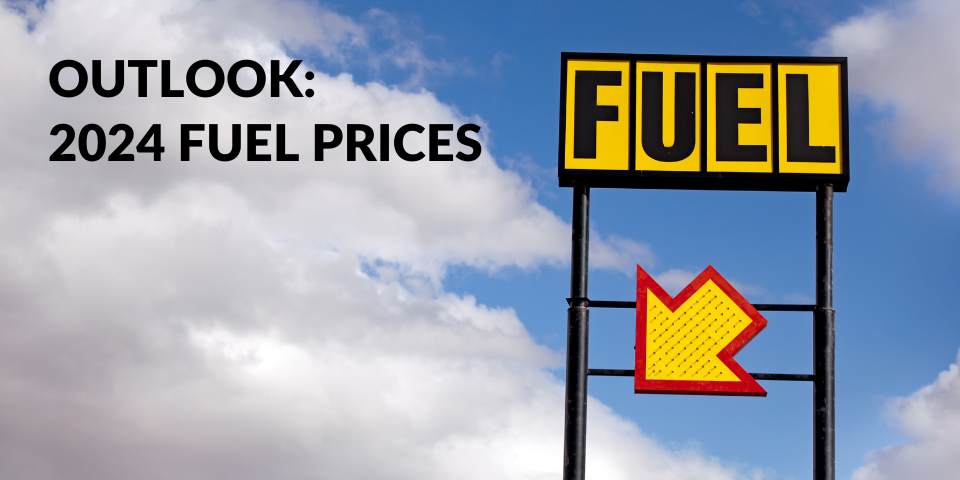In The News

Outlook: 2024 Fuel Prices
As of press time, the national average price of gasoline is $3.14 a gallon, which is down from $3.50 a year ago, according to the AAA, as the United States continues to exhaust multiple efforts to stabilize the constant flux in pricing ever since the covid pandemic in 2020.
Diesel is $3.93, which is considerably down from the $4.68 average of this time last year.
Gas prices are seemingly in a constant state of volatility, thanks in-part to the continuing war in Ukraine. California, which continues to remain the most expensive market this side of Hawaii, is still hovering around $4.54 per gallon.
With fuel being one of your biggest expenses as a logistics professional, higher prices at the pump mean lower profit in your pocket.
So, what’s driving the year-over-year fluctuation in fuel prices? Here are three factors to keep an eye on.
1. Post-Pandemic Normalization.
The sticker shock at the pump from 2022 might have had more to do with fondly recalling the historically low fuel prices of 2020, when folks were in lockdown status and not really driving anywhere. But 2021 saw prices tick higher once again, and farther still in 2022 and 2023, as many people continued to return to a daily commute and travel schedule.
We still continue to see a lot of people working from home, continuing the trend that was set in 2020, in which driving necessity had dwindled. However, for those having to endure a daily drive, the reality of having to fork out additional dough at the pump leaves most feeling unsettled.
2. Severe Weather Strikes.
With the increased propensity for severe storms popping up across the U.S., including tornadoes ravaging the mid-west as well as the increased coastal activity during hurricane season, beginning in June, watch for potential impacts to U.S. refineries in the Gulf that could signal another rise in fuel prices throughout much of 2024.
Folks need fuel to heat and power their homes during times of heightened weather emergencies, and increased fuel demand plus reduced supply will most often result in higher prices.
3. Global Economic Events.
Having already touched on the continuing war between Russia and Ukraine, there still doesn’t seem to be an end in sight. And with China continuing to interject in the dealings of the global economy, the constant unrest of any semblance of economic structure continues to keep the world on its toes.
Should there ever be a pullback of Russian forces in Ukraine, or any other event that might potentially slow down economic worries, then there may be an opportunity for fuel prices to take an extended breather. However, this scenario still seems highly unlikely at this time.
Bottom Line
At least for the foreseeable future, as fuel demands continue to increase, it appears the same will continue with prices at the pump. A critical factor that could help stabilize prices will be an increase in fuel supply, which remains to be seen if that is ever going to be possible.
